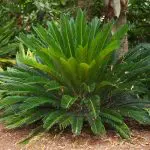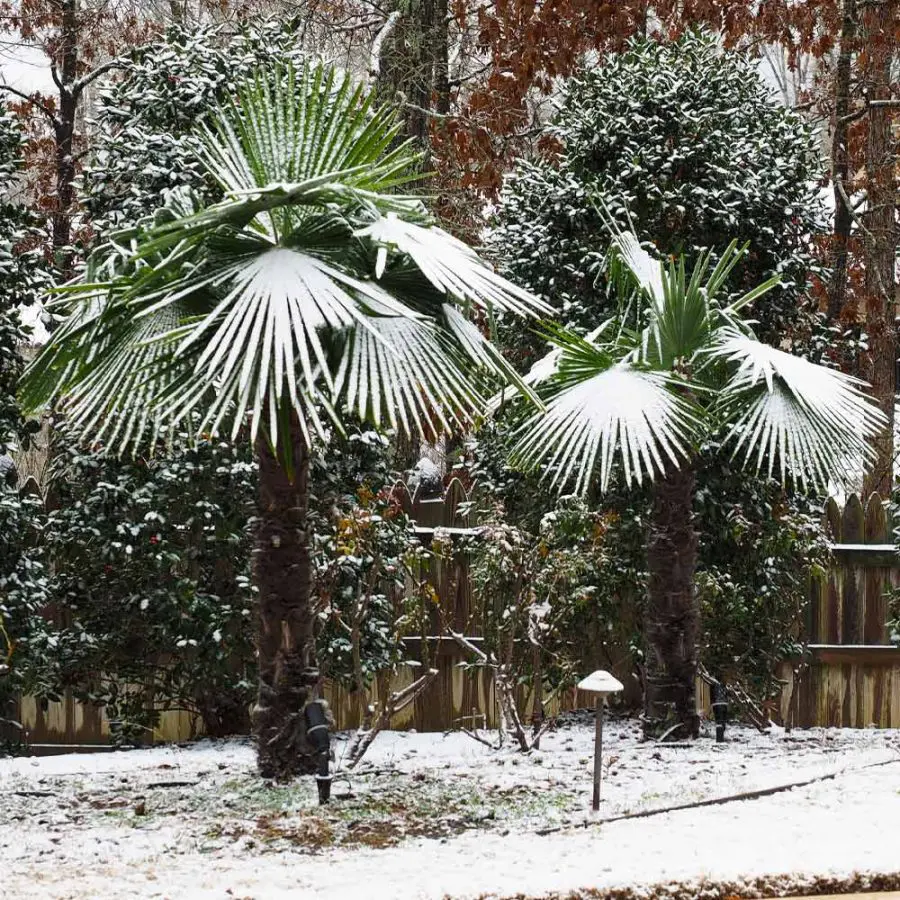This post contains affiliate links. If you buy something from one of our links we may earn a commission. Thanks
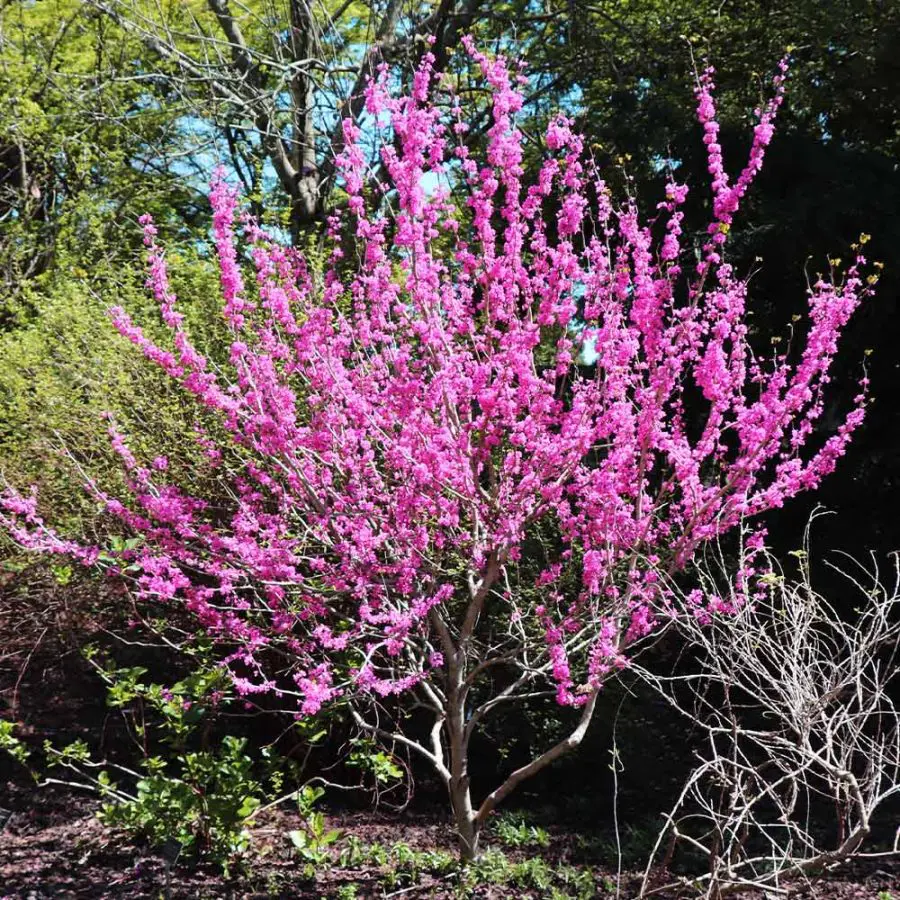
Learn how to grow and care for an Avondale Chinese Redbud Tree with our easy-to-follow guide.
Discover tips on watering, fertilizing, and pruning for a beautiful addition to your garden.
Grow your own Avondale Chinese Redbud Tree by selecting a location with well-drained, slightly acidic, and well-aerated soil rich in organic matter.
Ensure the site receives at least six hours of direct sunlight daily, although it can tolerate some shade. Proper site selection concerning sunlight, soil type, and drainage is crucial for the tree’s thriving growth
Are you looking for a beautiful and unique tree to add to your garden that offers a spectacular floral display each spring?
Look no further than the Avondale Chinese Redbud Tree Seeds!
But before you run out to the local garden centers and buy a Cercis chinensis Avondale, it’s important to know how to grow and care for it to ensure it thrives in your yard.
With our easy-to-follow guide, you’ll learn everything you need to know about watering, fertilizing, pruning, the Avondale Chinese Redbud Tree, and more.
So let’s get started on your journey to a beautiful Avondale Chinese Redbud Tree!
You can buy your Avondale Chinese Redbud Tree here
How to Grow and Care for an Avondale Chinese Redbud Tree
Welcome to our guide on the Avondale Chinese Redbud Tree!
This stunning tree is a perfect addition to any garden with its beautiful flowers and unique shape.
But like any plant, it requires the right care to thrive. In this guide, we’ll walk you through everything you need to know about growing and caring for an Avondale Chinese Redbud Tree.
From selecting the right location to pruning and maintenance, you’ll have all the tips you need to help your tree flourish. So, let’s dive in!
What Is An Avondale Chinese Redbud Tree?
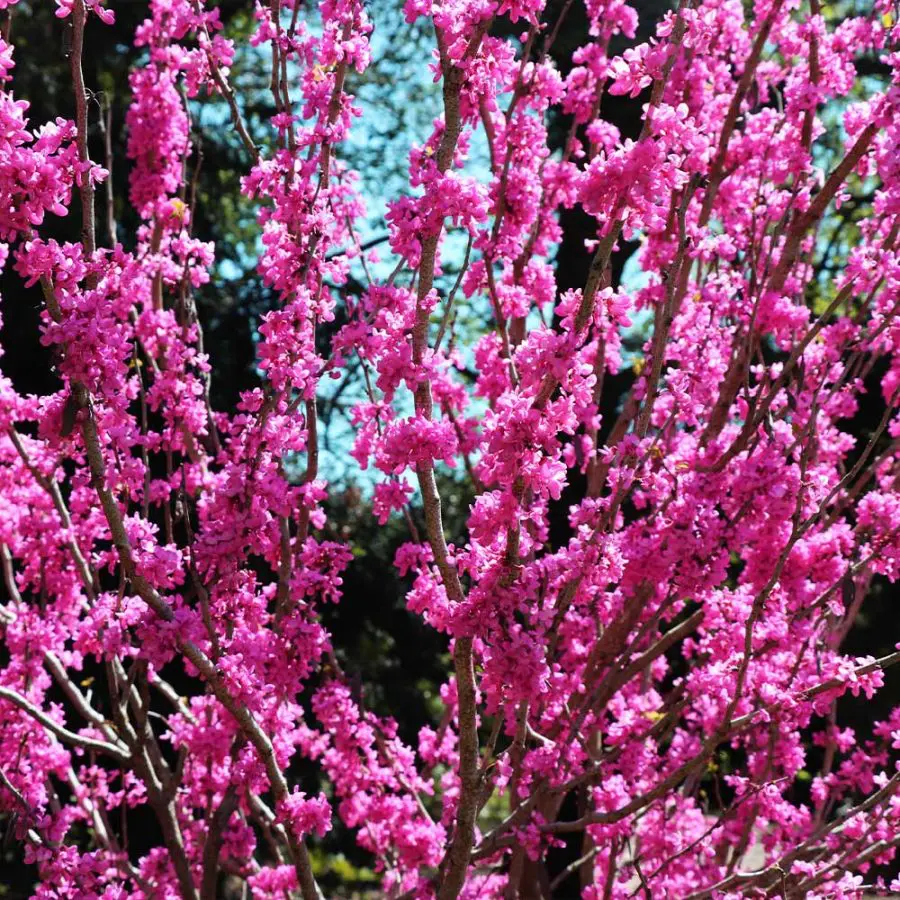
Avondale Chinese Redbud Trees are beautiful plants and unique ornamental trees that can add a splash of color to any garden.
This deciduous tree produces vibrant pink and purple flowers in early spring before growing lush green heart-shaped leaves throughout the summer.
It also produces bean-like seed pods in late summer. The tree is a deciduous shrub and typically grows to be about 20 to 25 feet tall and 15 to 20 feet wide.
Chinese Redbud Vs Eastern Redbud
The Chinese Redbud and Eastern Redbud are two popular ornamental trees that are often compared.
Both trees are known for their attractive pink or purple flowers in the spring, but they have some notable differences.
The Avondale Redbud, also known as Cercis chinensis, is a smaller tree or multi-stemmed shrub that typically grows up to 20 feet tall, making it a better choice for smaller gardens.
The Eastern Redbud, or Cercis canadensis, can reach up to 30 feet in height and is better for a large garden.
The Chinese Redbud has a more weeping habit, with branches that droop downward, while the Eastern Redbud has a more upright and spreading growth habit.
Apparently, redbuds are deer resistant making them an ideal choice if deer are a problem in your area.
The native habitat of Cercis chinensis, commonly known as Chinese Redbud, is in southern China.
Specifically, it is found in the provinces of Guangdong, Guangxi, Guizhou, Hubei, Hunan, Jiangsu, Jiangxi, Sichuan, and Yunnan.
Cercis canadensis is a U.S. native whose habitat is the eastern woodlands from New Jersey to northern Florida and westward to the Great Plains.
In terms of foliage, the Chinese Redbud cercis ‘Avondale’ has smaller glossy green leaves that are more glossy and darker green than the Eastern Redbud’s larger, more heart-shaped leaves.
Additionally, the Chinese Redbud’s leaves turn yellow in the fall, while the Eastern Redbud’s leaves turn yellow-green.
When it comes to location, the Chinese Redbud prefers well-drained soil and full sun, while the Eastern Redbud can tolerate part shade and a wider range of soil conditions.
Ultimately, both trees offer beautiful blooms and add visual interest to any landscape.
The choice between the two may come down to personal preference, as well as the specific growing conditions of the planting location.
Cercis canadensis ‘Forest Pansy’ variety has dark rose-purple flowers like the Avondale variety.
Avondale Chinese Redbud Tree Quick Facts
| Mature Height: | 10-12 ft. |
| Mature Width: | 10-12 ft. |
| Sunlight: | Full-Partial |
| Growth Rate: | Moderate |
| Botanical Name: | Cercis chinensis ‘Avondale’ |
| Grows Well In Zones: | 5-9 outdoors |
Get your Avondale Chinese Redbud Tree here
Avondale Chinese Redbud Tree Benefits:
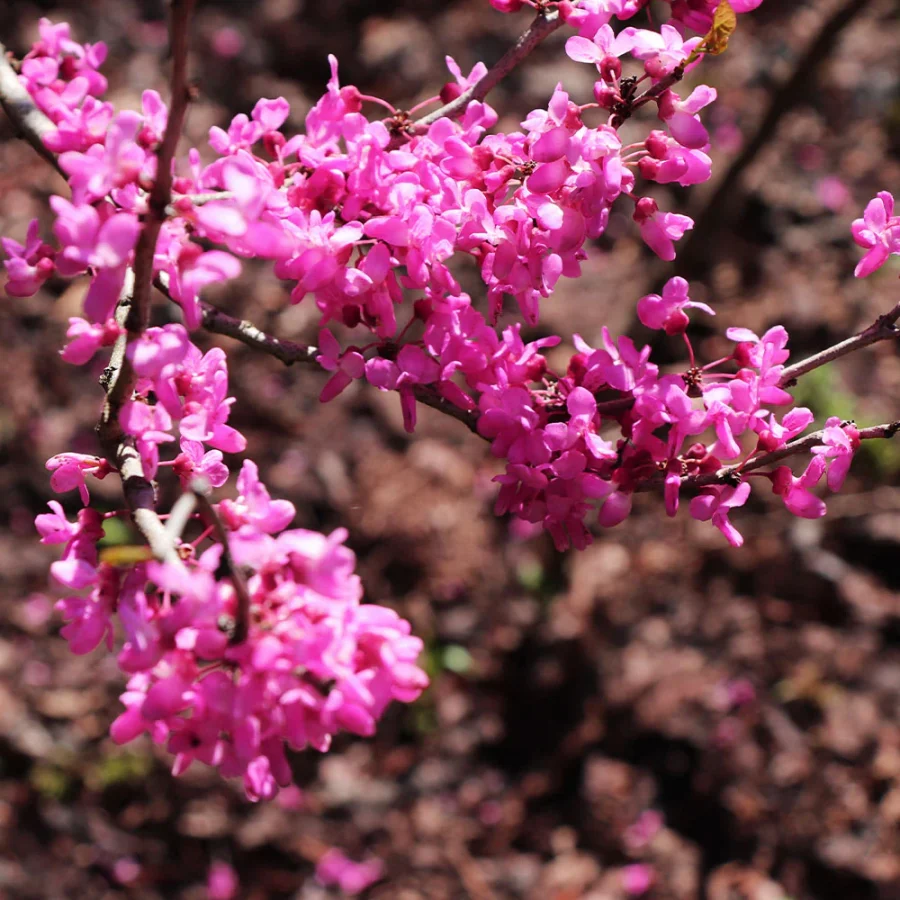
Growing the Avondale Chinese Redbud Tree offers several benefits for your woodland gardens.
• Its unique and beautiful appearance can make it a centerpiece of your garden design.
• Its early spring blooms can be a welcome sight after a long, cold winter.
• It is a relatively low-maintenance tree that can adapt to a wide range of soil and environmental conditions.
Chinese Redbud Tree Care – Location
When selecting a location for the Avondale Chinese Redbud Tree, it’s important to choose a spot with well-drained soil and well-aerated soil.
This tree prefers slightly acidic soil that is rich in organic matter. The tree also prefers full sun to partial shade but can tolerate some shade.
Tips for selecting a site:
To ensure your tree thrives, select a site with the right amount of sunlight, soil type, and drainage.
Look for a location that receives at least six hours of direct sunlight each day.
Avoid planting in areas that are prone to flooding or waterlogged soil, as this can lead to root rot.
Additionally, avoid planting the tree too close to other trees or structures, as it can inhibit its growth.
Soil preparation:
To ensure the tree has the best chance of success, prepare the soil before planting.
Remove any rocks or plant debris from the planting area, and amend the soil with compost or organic matter to improve drainage and nutrient availability.
Test the soil pH and adjust as necessary to ensure it falls within the tree’s preferred range.
By selecting the right location and preparing the soil properly, you can give your Avondale Chinese Redbud Tree the best chance to thrive and provide beauty to your garden for years to come.
Planting the Avondale Chinese Redbud Tree
Are you ready to add a splash of color to your garden with an Avondale Chinese Redbud Tree?
The next step is planting! This is a crucial step in ensuring the tree has the best chance of success.
In this section, we’ll guide you through the process of planting your Avondale Chinese Redbud Tree.
We’ll cover everything from selecting the right time to plant to digging the perfect hole, to properly watering your tree. So let’s get started!
Planting process:
Planting your Avondale Chinese Redbud Tree is an important step in ensuring its health and longevity.
• Start by digging a planting hole that is roughly twice as wide as the root ball and just as deep.
• Next, gently remove the tree from its container and loosen any tangled roots.
• Place the tree in the hole and backfill the hole with the soil you removed, making sure to tamp the soil down gently to eliminate any air pockets.
• Plant the tree so it is at ground level and at the same height as the container it came in.
Watering:
Water your newly planted Avondale Chinese Redbud Tree thoroughly, making sure the soil is moist but not waterlogged.
Continue to water the tree regularly for the first year, especially during hot, dry spells.
Staking:
In some cases, staking your tree may be necessary to provide support and prevent it from toppling over.
If your tree is tall and slender, or if it’s planted in a windy area, staking can help ensure its stability.
To stake your tree, simply insert two wooden stakes into the ground near the trunk and tie the tree to the stakes with a soft, flexible material like tree ties or old stockings.
Be sure not to tie the tree too tightly, as this can cause girdling damage.
By following these planting tips, you can ensure that your Avondale Chinese Redbud Tree gets off to a healthy start and continues to provide beauty to your garden for years to come.
Watering and fertilizing
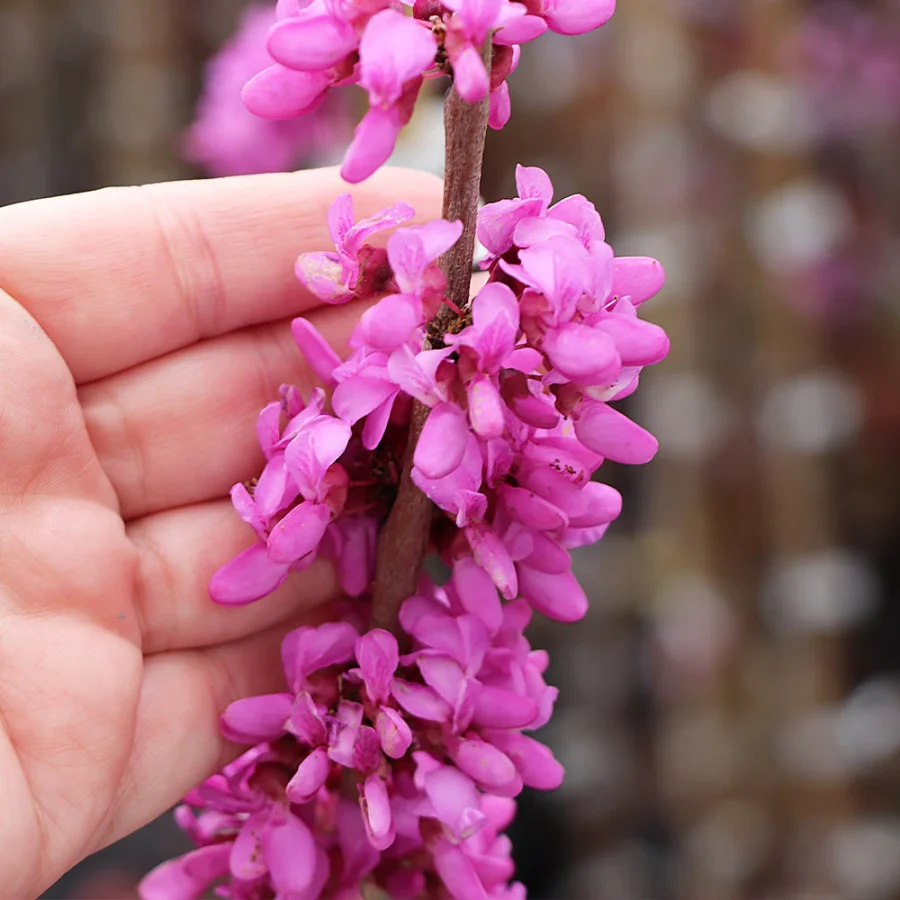
Watering and fertilizing are essential for the healthy growth of any tree, and the Avondale Chinese Redbud Tree is no exception.
In this section, we’ll explore the best practices for watering and fertilizing your tree.
We’ll cover everything from the ideal amount of water to give your tree, to the best type of fertilizer to use.
With these tips, you’ll be able to keep your Avondale Chinese Redbud Tree thriving and looking beautiful. So let’s dive in!
Watering:
Proper watering is essential for the health of your Avondale Chinese Redbud Tree, especially during its first year of growth.
Water the tree deeply once a week, providing about an inch of water each time.
During hot and dry weather, you may need to water your tree more often.
To prevent water from evaporating too quickly, apply a layer of mulch around the base of the tree, being careful not to pile it up against the trunk.
Fertilizing:
The Avondale Chinese Redbud Tree doesn’t require much fertilization, but applying a balanced fertilizer in the spring can help promote healthy growth and vibrant foliage.
Look for a slow-release, all-purpose fertilizer that’s high in nitrogen, and apply it according to the package instructions.
Additional Tips:
Keep an eye on your tree for signs of stress, such as yellowing leaves or wilted branches.
If you notice any issues, adjust your watering or fertilizing routine accordingly.
Additionally, be sure to keep the area around the tree free of weeds and other competing plants, as this can help it thrive.
By following these watering and fertilizing tips, you can ensure that your Avondale Chinese Redbud Tree stays healthy and beautiful for years to come.
Pruning and maintenance

Keeping your Avondale Chinese Redbud Tree in top shape requires regular pruning and maintenance.
Pruning helps to shape the tree and removes any dead or damaged branches, while maintenance tasks like mulching and pest control can help keep the tree healthy and looking its best.
In this section, we’ll dive into the best practices for pruning and maintaining your Avondale Chinese Redbud Tree, so you can enjoy its beauty for years to come.
So let’s get started!
Pruning:
Regular pruning is essential for the health and appearance of your Avondale Chinese Redbud Tree.
Prune the tree in late winter or early spring, before new growth appears. Remove any dead, diseased, or damaged branches, as well as any branches that are crossing or rubbing against each other.
Additionally, you can shape the tree by pruning back any branches that are growing too long or in an undesirable direction.
Be sure to use sharp, clean pruning tools to prevent the spread of disease.
Maintaining Shape and Size:
To maintain the tree’s shape and size, it’s important to prune it regularly.
You can also use pruning to encourage the tree to grow in a certain direction or to control its size.
Avoid letting the tree grow too large or bushy, as this can make it difficult to prune and can detract from its beauty.
Preventing Pests and Diseases:
Regular maintenance can help prevent pests and diseases from attacking your Avondale Chinese Redbud Tree.
Keep the area around the tree free of debris and other plant material, as this can provide a breeding ground for pests.
Additionally, keep an eye out for signs of pest infestation or disease, such as discolored leaves or damaged bark.
If you notice any issues, treat the tree promptly with an appropriate organic insecticide or fungicide.
Protecting from Extreme Weather:
Extreme weather conditions, such as frost or drought, can damage or kill your Avondale Chinese Redbud Tree.
To protect the tree from these conditions, water it deeply during dry spells, and cover it with a frost cloth or burlap during cold snaps.
Additionally, avoid pruning the tree during periods of extreme weather, as this can make it more susceptible to damage.
By following these pruning and maintenance tips, you can keep your Avondale Chinese Redbud Tree healthy and looking beautiful for years to come.
Growing Avondale Chinese Redbud Tree as a Bonsai
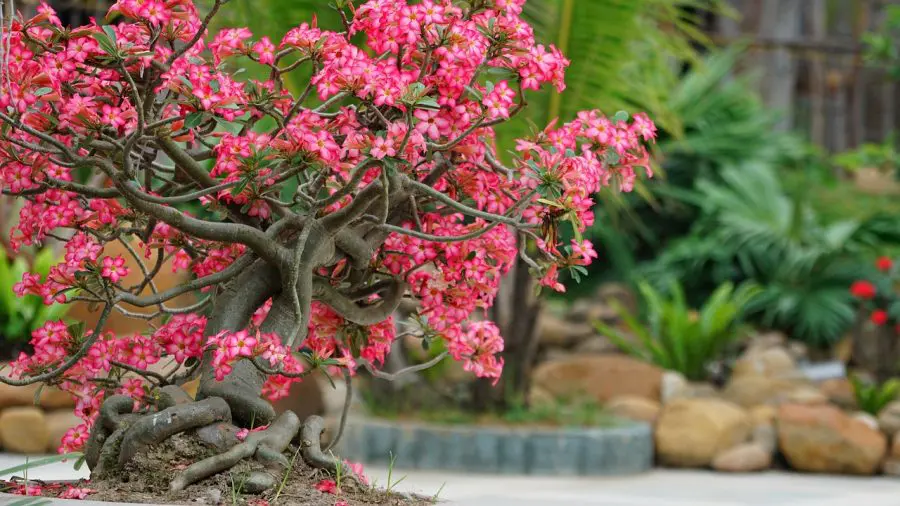
Did you know that you can also grow your Avondale Chinese Redbud Tree as a bonsai?
Bonsai is the art of growing a small tree or shrub in small containers and shaping them into miniature versions of their full-sized counterparts.
Growing an Avondale Chinese Redbud Tree as a bonsai can be a rewarding experience, as it allows you to appreciate its beauty in a small garden on a smaller scale.
In this section, we’ll go over some tips on how to grow your Avondale Chinese Redbud Tree as a bonsai, including the right container size, pruning techniques, and care instructions.
So let’s get started!
• Choosing the right container and soil is crucial for successful bonsai cultivation.
Look for pots that are shallow and have good drainage, and use a well-draining soil mix that allows for proper airflow and water retention.
• To maintain the miniature size and unique form of your Avondale Chinese Redbud Tree bonsai, regular pruning, and shaping are essential.
Use sharp, clean tools to carefully trim back new growth and shape the tree according to your desired design.
• Caring for your Avondale Chinese Redbud Tree bonsai involves regular watering, fertilizing, and repotting.
Water your tree when the soil feels slightly dry to the touch, and use a balanced fertilizer during the growing season.
Repotting should be done every few years, carefully removing the old soil and trimming back the roots before placing it in fresh soil.
• Lighting and temperature control are also important factors to consider for bonsai growth.
Place your Avondale Chinese Redbud Tree bonsai in a location with bright, indirect sunlight and maintain a consistent temperature range between 60-75°F.
• Growing an Avondale Chinese Redbud Tree bonsai is a fun and unique way to appreciate this beautiful tree on a smaller scale.
With a little bit of care and attention, you can create a stunning addition to your bonsai collection that will bring joy for years to come.
This indoor bonsai tree kit comes with exquisite bonsai tree variations, such as Jacaranda Mimosifolia, Japanese Black Pine, Purple Wisteria, Delonix Regia, Japanese Red Maple, Ficus Microcarpa, and Sophora Japonica.
Avondale Chinese Redbud FAQs
Caring for an Avondale Chinese Redbud Tree might prompt numerous questions due to its unique characteristics and garden value.
Below are frequently asked questions covering essential topics like soil preferences, sunlight needs, shade tolerance, and site selection to help your tree thrive and flaunt its beautiful pink blossoms each spring.
Q. What type of soil is preferred?
A. The Avondale Chinese Redbud Tree thrives in slightly acidic soil which is rich in organic matter. This type of soil provides the necessary nutrients and ensures good drainage, which is essential for its healthy growth.
Q. How much sunlight does it need?
A. It requires a minimum of six hours of direct sunlight every day. The ample sunlight supports its flowering and overall growth.
Q. Can it tolerate shade?
A. Yes, it can tolerate some shade, but too much can hinder its growth and flowering. It’s adaptable but performs best with ample sunlight.
Q. What’s vital for selecting a planting site?
A. A proper site selection considering sunlight exposure, well-drained and slightly acidic soil type, and a location with good air circulation is vital for the thriving growth of the Avondale Chinese Redbud Tree.
Avondale Chinese Redbud Tree Final Thoughts
Congratulations, you have now learned how to grow and care for an Avondale Chinese Redbud Tree!
By following the tips and advice provided in this guide, you can enjoy the beauty and benefits of this stunning tree in your own garden.
Remember to choose the right location, plant it properly, water and fertilize it regularly, prune and maintain its shape, and protect it from pests and diseases.
And if you’re feeling adventurous, consider growing it as a bonsai for a unique and eye-catching addition to your plant collection.
A Quick Recap
Throughout this article, we have discussed several key points for successfully growing and caring for an Avondale Chinese Redbud Tree.
It all starts with choosing the right location, ensuring the tree receives the appropriate amount of sunlight and proper drainage.
Planting the tree correctly, providing it with the right amount of water and fertilization, and pruning and maintaining its health is also crucial to ensure its longevity.
Additionally, we explored the unique world of bonsai cultivation, where an Avondale Chinese Redbud Tree can be grown into a miniature version of itself, providing a beautiful addition to any collection.
The benefits of growing an Avondale Chinese Redbud Tree in your garden are numerous.
The tree’s attractive pink or purple flowers make it a stand out in any landscape.
With its low maintenance requirements and ability to attract pollinators such as bees and butterflies, it is an excellent choice for any gardener looking to add beauty and life to their garden.
Don’t be afraid to take the leap and plant an Avondale Chinese Redbud Tree, even if you’re new to gardening or tree care.
With the right information and a little effort, anyone can successfully grow and care for this beautiful tree.
Remember to choose the right location, plant, and water the tree properly, and prune and maintain its health.
And if you’re feeling adventurous, why not explore the world of bonsai cultivation? Growing an Avondale Chinese Redbud Tree as a bonsai can be a rewarding and unique experience.
With patience and care, you’ll be rewarded with a beautiful and thriving tree in your garden. So go ahead and give it a try – you might just surprise yourself with how green your thumb really is! Happy Gardening!
Get your Avondale Chinese Redbud Tree here
Get more backyard garden ideas






